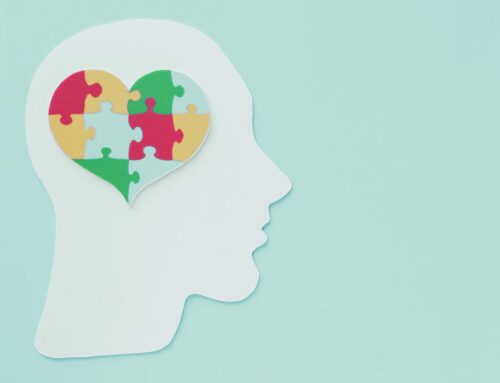Alcohol Use & the Quarterlife Crisis

Are you worried about your alcohol use? Has a loved one expressed concern about your drinking? If you believe you might have an alcohol problem, you are NOT alone. Many people are struggling with Alcohol Use Disorder (AUD).
30% of Americans ages 18 and older have had an AUD in their lifetime.
Quarterlife young adults have the highest prevalence of problematic drinking.
Specifically, adults ages 18 to 25 have the highest prevalence of binge drinking and heavy drinking.* Adults in their 20s and 30s are at particular risk for struggling with an AUD, given the multiple stressors that people this age are facing, often as part of a quarterlife crisis. Additionally, the social norms of this age group encourage drinking frequently and often in large quantities. Read my blog post about binge drinking among adults in their 20s and 30s.
The current version of the Diagnostic and Statistical Manual of Mental Disorders (DSM-V) defines AUD as problematic drinking, that can range from mild to severe.
The following information will help you figure out if you have an AUD.
Here are 11 questions to consider, using the DSM-V diagnostic criteria:
In the past year, have you:
Had times when you ended up drinking more, or longer than you intended?
More than once wanted to cut down or stop drinking, or tried to, but couldn’t?
Spent a lot of time drinking? Or being sick or getting over the after-effects?
Experienced craving–a strong need, or urge, to drink?
Found that drinking, or being sick from drinking, often interfered with taking care of your home or family? Or caused job or school problems?
Continued to drink even though it was causing trouble with your family or friends?
Given up or cut back on activities that were important or interesting to you, or gave you pleasure, in order to drink?
More than once gotten into situations while or after drinking that increased your chances of getting hurt (such as driving, swimming, using machinery, walking in a dangerous area, or having unsafe sex)?
Continued to drink even though it was making you feel depressed or anxious or adding to another health problem? Or after having had a memory blackout?
Had to drink much more than you once did to get the effect you want? Or found that your usual number of drinks had much less effect than before?
Found that when the effects of alcohol were wearing off, you had withdrawal symptoms, such as trouble sleeping, shakiness, irritability, anxiety, depression, restlessness, nausea, or sweating? Or sensed things that were not there?
If you answered yes to at least 2 of these questions, you may be developing, or already have, an Alcohol Use Disorder.
Additionally, this quiz developed by the World Health Organization will help you determine if your alcohol use is excessive.
Don’t Ignore This
The sooner you deal with this, the better. By dealing with your AUD as soon as possible, you will prevent severe alcohol dependence and long-term health problems.
Less than 20% of people with an AUD seek help for their alcohol use.
Quarterlife clients who are struggling with an AUD often tell me that they don’t feel ready to deal with their drinking, usually because they are under the impression abstinence is the only option. It’s common for people to fear that the only way to deal with their alcohol problem is to abstain, but this isn’t necessarily the case. Reduction in alcohol use, or moderation, may also be an option for you.
For many, abstinence is not the only option.
Your medical provider or therapist can help you determine whether moderation or abstinence is more appropriate for you. There are numerous treatment approaches available, depending on your goals and desires, and the severity of your AUD.
* Binge drinking is defined by researchers as having 5 or more drinks in a row on at least one occasion in past month, and heavy drinking is defined as having 5 or more drinks in a row on at least five occasions in the past month.
References:
Alcohol abstinence vs. Moderation (2009). Harvard Health Publications, Harvard Medical School. http://www.health.harvard.edu/family-health-guide/alcohol-abstinence-vs-moderation
Chen, C.Y. et al. Alcohol Use Among Young Adults Ages 18-24, Alcohol Research & Health (2004/2005), 28(4), National Institute on Alcohol Abuse and Alcoholism. http://pubs.niaaa.nih.gov/publications/arh284/269-280.htm
Grant, B.F. et al., (Aug 2015). Epidemiology of DSM-5 Alcohol Use Disorder. JAMA Psychiatry, 72 (8). http://archpsyc.jamanetwork.com/article.aspx?articleid=2300494
National Institute on Alcohol Abuse and Alcoholism, Alcohol Facts and Statistics. https://www.niaaa.nih.gov/alcohol-health/overview-alcohol-consumption/alcohol-facts-and-statistics
National Institute on Alcohol Abuse and Alcoholism, Alcohol Use Disorder. https://www.niaaa.nih.gov/alcohol-health/overview-alcohol-consumption/alcohol-use-disorders
U.S. Department of Health & Human Services (April 2006), Alcohol Alert (68), http://pubs.niaaa.nih.gov/publications/aa68/aa68.htm
If you’re interested in scheduling an appointment or you’d like more information, please call us at 1-844-QLC-TALK (1-844-752-8255) or email us here







